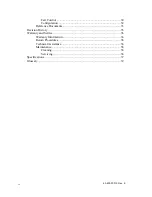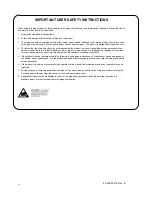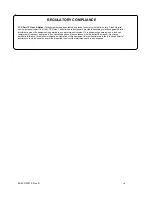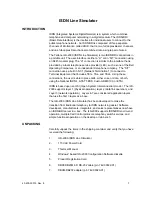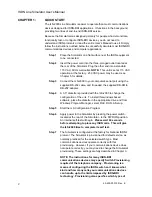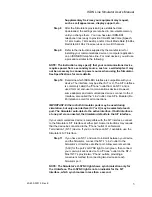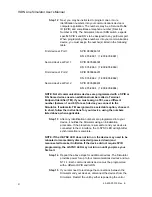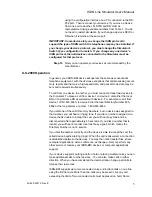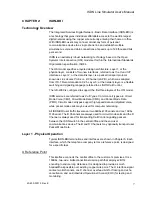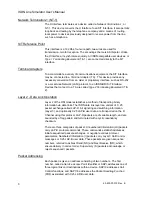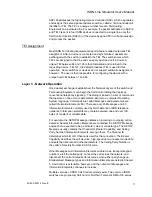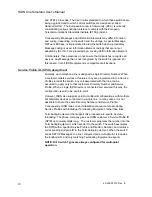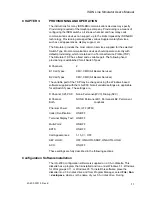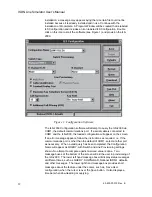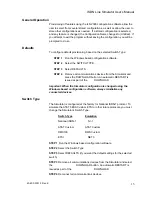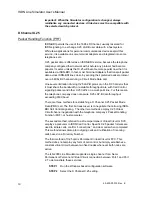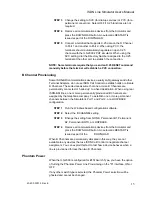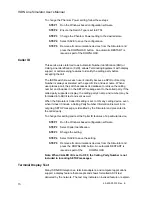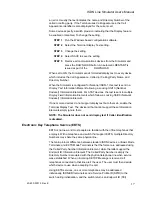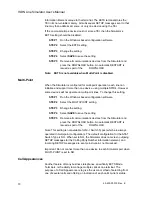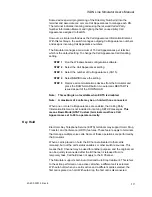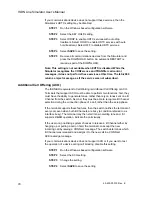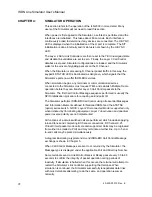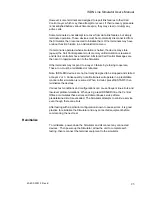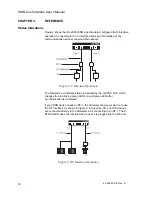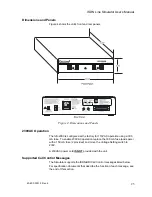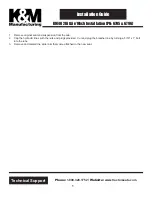
ISDN Line Simulator User’s Manual
40-400-00012, Rev. E
10
and AT&T’s 5E series. The Call Control standard to which these switches are
being upgraded and to which current switches are designed is called
National ISDN-1
. The European Economic Community, (ECC) is currently
consolidating various national versions to comply with the European
Telecommunications Standards Institute (ETSI) protocol.
Consequently, Messages and Information Elements may differ in function
and coding, depending on the switch and the vintage. A special Message,
NETwork ESCape, is implemented to alert the switch when a proprietary
Message coding is used. Information Element codings that are not yet
adopted by the ITU-T are preceded by a
Locking Shift
Information Element.
Unfortunately, these practices do not ensure that all switches recognize all
devices. Any Message that is not recognized by the switch is ignored. For
this reason, not all ISDN equipment is compatible at all locations.
Service Profile ID (SPID) Assignment
Normally, each telephone line is assigned a single Directory Number. When
a customer orders services or features, they are programmed into a
Service
Profile
stored at the switch. Any call associated with that line can be
assumed to apply only to that customer’s Directory Number and Service
Profile. When a single ISDN device is connected and serviced this way, the
configuration is said to be
point-to-point
.
However, ISDN also supports
point-to-multipoint
configurations, with multiple
but dissimilar devices connected to a single line. In many cases, it is not
desirable to share the same Directory Number and Service Profile.
Consequently, ISDN relies on an initialization procedure for associating
Service Profiles with individual Terminating Equipment, rather than lines.
Terminating Equipment that support this procedure are said to be
Auto-
Initializing.
The phone company gives an ISDN customer a Service Profile ID
(SPID) up to twenty digits long. The customer programs the number into the
Terminating Equipment, which sends it to the switch. The switch associates
the SPID with a specific Service Profile and Directory Number, and returns a
corresponding
Endpoint ID
to the Terminating Equipment. When the switch
sends SETUP Messages to a line configured point-to-multipoint, it includes
the Endpoint ID, and only matching Terminating Equipment respond.
NOTE: NI-1 Switch Types are always configured for multi-point
operation.

